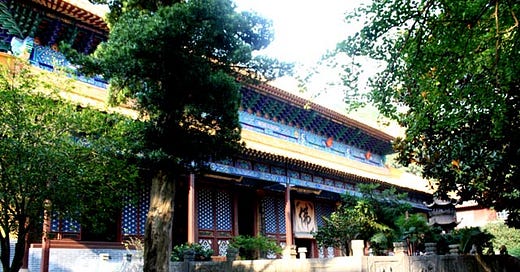Let's pay a visit to the temple the name of which has impressed me more than any other. If my karma ever results in my being allowed to found a temple of my own, it, too, will probably be called Fayu--"Dharma Rain." I'll explain in this episode of--
TEMPLE TALES!




